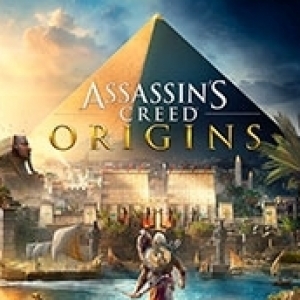Onearmedcookie (6 KP) rated the PlayStation 4 version of Assassin's Creed: Origins in Video Games
Feb 10, 2018
Yet since the second game appeared, and introduced us to the charming Ezio, I have been hooked. The latest installment – entitled Origins has seen Ubisoft go back to the drawing board redesigning some of the games mechanics. Hoping to breathe new life into the series, whilst spinning another tale in history. I have to confess for the most part it has proved to be rather successful.
I have rather enjoyed this series, playing through all of the different historical places. The last in the series though, Syndicate was superb. Instantly my favourite so far so for me Origins – had a lot to live up to! I was worried initially when, Ubisoft had decided to delay the next instalment for a year whilst they looked at redesigning elements that for me had previously worked fine.
With this in mind, I loaded the game into my trusty PS4 and began my journey! Origins takes place in ancient Egypt just as Cleopatra is fighting for the throne. The game centres around a Medjay named Bayek and his wife Aya who find themselves thrust into the fight for Egypt between Cleopatra and the new Pharaoh – her brother - Ptolemy XIII. This is the birthplace of the assasins guild and the beginning of their fight against the knights of the templar!
The story is captivating, well thought out and the characters soon jump from the screen making you want to push forward to see what happens to them. In fact the characters are some of the best in the series, they have been developed well with real character development making them seem even more real. You can’t help but feel immersed in this new word as you discover more of Egypt. I also want to point out how well the characters are voiced, the voice acting in Origins is top notch. Fuelled with emotion and true grit, this only opens them up more. Making the game feel deeper than any before in the series. This is tory telling at its best.
I mentioned that Ubisoft went back to the drawing board on this one, changing some of the formula that we’ve all become used to. This is a bigger world to explore than any before it, Egypt is epic in scale and lovingly recreated. The world is brimming with life and it certainly feels like a more open world adventure than the previous instalments in the series. You can backtrack revisiting other areas or totally bypass them – the choice is yours.
There also seems to be a bigger range of side quests, helping you level up the character – unlocking handy upgrades as you go. Crafting is even present albeit in a simpler format than in most RPG’s. Similar to the Farcry series you can now hunt the wildlife in the area to help craft better equipment.
One of the biggest changes for me though, was the Eagle vision! Gone is the yellow vision highlighting heat signatures in red, with targets in gold allowing you to see through walls. Now you get to fly a real Eagle above you in the sky – tracking enemies and other areas of interest. It adds a whole new dimension to the game, casing an enemies camp from the sky – tracking their movements from up above really adds to the feel of the game. As you level up you can also have the Eagle attack and distract enemies allowing you to sneak past areas unseen. I love this idea and could quite happily fly Sensu around the environment for hours on end.
Combat has also been overhauled. Alas, for me this is probably the weakest part of the game. You can now block with your shield by pressing the L1 shoulder button. Heavy and medium attacks are found on the R1 & R2 buttons. For ranged attacks you press L2 to equip your bow! Sounds okay, but in practice I have found this new layout a trifle irritating. Imagine three guards are rushing you, you hit one and then go to block a blow with your shield – darn it you accidently hit L2 instead and suddenly you have your bow in your hand, getting cut up by two other guards! Frustrating isn’t the word. Especially when you get to some of the higher level guards with better AI.
Other than the combat though this is a solid game, with a very in depth strong story and well developed characters. If you got a little bored with the series, then this is the game to get you back in. It’s bold, with a beautifully crafted world to explore. Assassin’s Creed is back and it’s about time!
Purple Phoenix Games (2266 KP) rated Posthuman in Tabletop Games
Aug 25, 2021
Posthuman is set in that dark post-apocalyptic horrorscape and is an exploration adventure game with character upgrading and dice-driven combat. The twist here is that humans are trying to escape the mutant creatures to The Fortress, a safe haven for all, but once infected may turn mutant and also turn on the party to prevent that glorious end. In this review, however, I will be playing through the solo rules, and they do not have players turning into mutants during the game. Bummer, eh?
DISCLAIMER: We are using the Kickstarter Deluxe version of the game. We do have the Defiant expansion from the KS campaign, but will not be using it for this review (I don’t think). Also, we do not intend to cover every single rule included in the rule book, but will describe the overall game flow and major rule set so that our readers may get a sense of how the game plays. For more in depth rules, you may purchase a copy from the publisher directly or from your FLGS. -T
To setup consult the rulebook, as there are so many decks of cards and character setup steps that need to happen that I just cannot detail here. Once setup your play area will look something like the photo below. Once setup is complete you are ready to begin your journey to The Fortress.
Posthuman is played over a series of rounds until the player wins or loses. The only way to win is to enter The Fortress before the Event deck runs out, and obviously the only way to lose is to run the Event deck out of cards or become a mutant by suffering five scars.
A round consists of several phases. The first phase is Event Resolution. The player will flip the top Event card and resolve its text. These Events could be a one-shot bad (or good) thing for the player, or may be an ongoing Seasonal Event that will stay in play until another Seasonal Event is drawn.
After the Events, characters will need to Eat to survive. Characters will be able to forage for food in a subsequent phase, but know that food is very important and if characters go too long without eating they will be suffering penalties of their Health and Morale.
Once fed (or starved, I suppose), the player will Declare an Action from the following: Camp, Forage, Scout, or Move (in multiplayer there is an additional action as well). To Camp players will forego any other action to heal their character. When a character Forages they will flip the current tile’s marker to show it may no longer be foraged and draw a Supplies card to see what supplies they will be able to gather. These could be more food tokens, ammo, equipment or weapons. To Scout a character will draw terrain tiles equal to the number of exits shown on their current terrain tile. The player will place the tiles however they want and this will provide insight into future locations and what they may hold. Lastly a player may Move into a connected terrain tile and begin having encounters upon it.
Most of the action in Posthuman comes as a result of having encounters on terrain tiles. Depending on where the character meeple is located on the Central Board track encounters will be drawn from the level one, two, or three decks and encountered immediately. Most of the encounters are combats, and I could write another whole post on combat, but I will spare you the details and merely say that combat is very involved and encompasses many steps to resolve. At the end of the combat a character may receive the encountered creature card as a VP trophy to be spent later on upgrades. The VP card may also instruct the player to move the meeple one space closer to The Fortress on the Central Board track. The other type of encounter card presents choices for the player to make or stat tests to overcome via die rolls.
Play continues in this fashion until the player wins by reaching The Fortress, or by losing to the forces set against them.
Components. This box is chock FULL of components and they are all super high-quality and enjoyable to play with. I do have a couple issues with some bits. Firstly, the player boards are quite small, and the tracking cubes are not meant for big meaty paws at all. Similarly, the tracking chits to be used for stats on the player board are flimsy and don’t really stay in place too well. Also the game comes with two different shades of gray player meeple colors and NOT a purple option. Shame! Shame! Shame!
When all is said and done Posthuman delivers an exciting experience on the table for a solo player and indulges the player’s need to roll dice on the regular. Just me? Didn’t think so. The combat is great, but I found myself discarding more enemies than defeating in some games and that is quite annoying. One game I refused to Scout at all and that totally bit me in the booty. So Scout, y’all.
Just know that playing this solo is NOT a cakewalk at all. I watched a playthrough video where the host won the game but nearly every roll of the die was favorable and every combat successful. Even still, she nearly ran out of time and lost the game. So games really can come down to the wire. Now, I haven’t really gotten very close to winning yet, but my day is coming!
I like this one a lot, and will certainly be going back to it for my solo plays. I have been playing some really great solo games lately, and I am very thankful for that. Posthuman, however, I don’t think will get much multiplayer action at my house. The rules are plentiful and the people I normally game with do not enjoy rules-heavy games. Similarly, I don’t think the theme is for everyone. I dig it, but different strokes and all. If you are in the market for a new (to you) game that can be played solo or multiplayer with an interesting theme and is pretty difficult, look up Posthuman. Just stay away from the mutants. These do NOT want to recruit you to their school for gifted people.
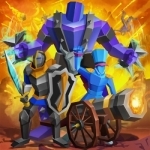
Epic Battle Simulator 2
Games
App
From the creators of Epic Battle Simulator, comes Epic Battle Simulator 2, the most accurate battle...
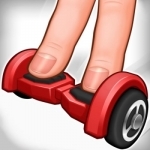
Hoverboard Drift Sim Simulator- Tricky Hover Board
Games
App
Hoverboard Drift Sim Simulator Racing Game is a fun way to test your hoverboard drifting skills on...
Be More Cat: Life Lessons from Our Feline Friends
Alison Davies and Marion Lindsay
Book
Embrace your inner cat with this light-hearted self-help book. From living in the moment, trusting...
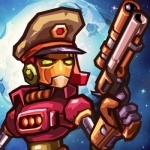
SteamWorld Heist
Games and Entertainment
App
10/10 - Touch Arcade: "A genuine must-have. Don't miss it." 10/10 - US Gamer: "Everyone should play"...
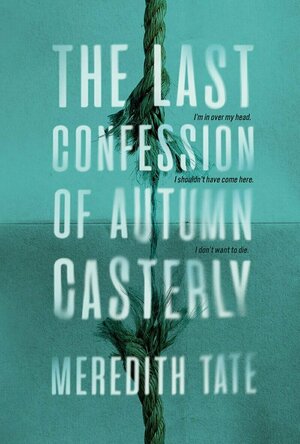
The Last Confession of Autumn Casterly
Book
When band-geek Ivy and her friends get together, things start with a rousing board game and end with...
YA
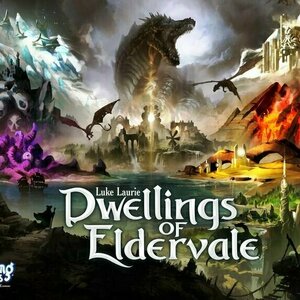
Dwellings of Eldervale
Tabletop Game
Dwellings of Eldervale is an epic worker placement game set in a once lost magical world. Giant...
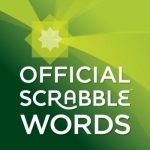
Collins SCRABBLE™ Checker and Solver
Games and Reference
App
The official 2015 wordlist to CHECK, SOLVE and TRAIN your way to SCRABBLE™ success. Endorsed by...

Darts Score Pocket
Sports and Games
App
◆◇ LIMITED TIME SALE! ◆◇ $5.99 --> $2.99 (50%OFF) -- Simple darts machine in your pocket --...
